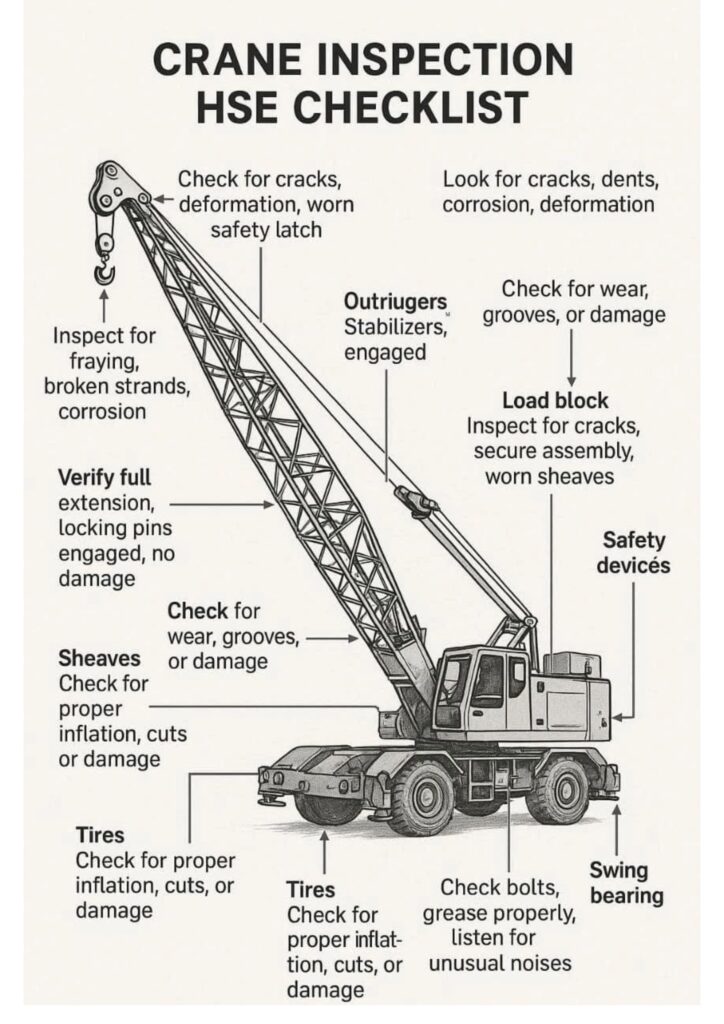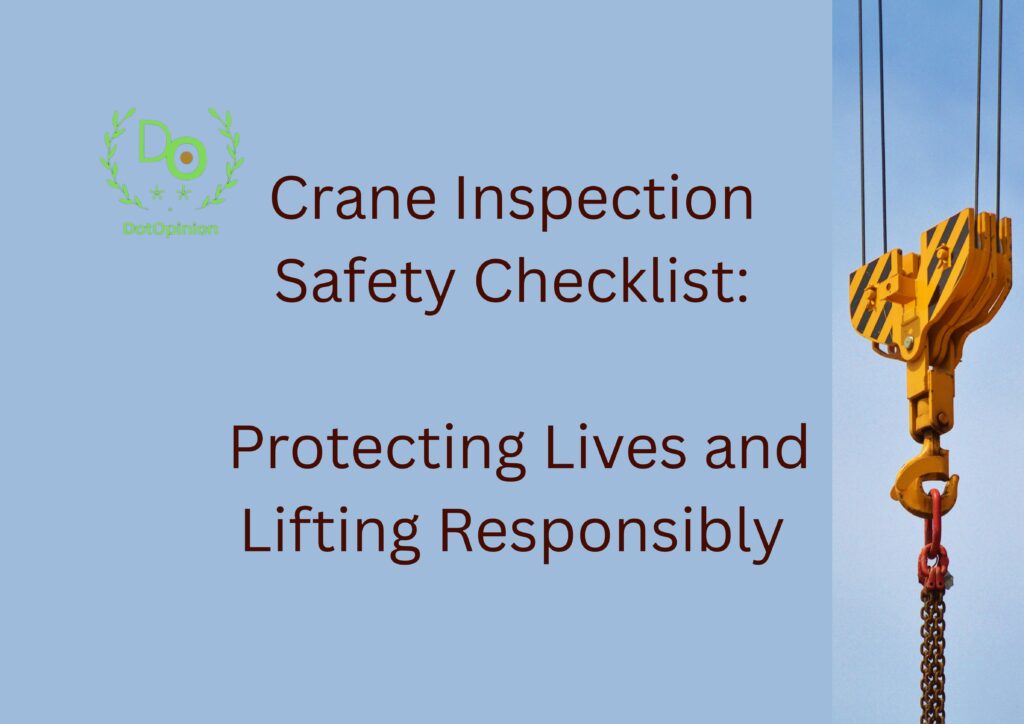Cranes are vital workhorses on construction sites, ports, and industrial plants. But with great lifting power comes great responsibility — ensuring crane safety through rigorous inspections isn’t just good practice, it’s a legal and ethical necessity. This blog outlines a comprehensive Crane Inspection Safety Checklist to help operators, safety officers, and project managers maintain safe and compliant lifting operations.
Why Crane Inspections Matter
Crane-related accidents can lead to catastrophic injuries, fatalities, and extensive property damage. Most of these incidents are preventable. Regular crane inspections reduce the risk of:
- Structural failures
- Load drops
- Electrocutions
- Overturning
- Mechanical breakdowns
Regulations from OSHA (Occupational Safety and Health Administration), ANSI, and country-specific safety codes (e.g., PEC in Pakistan) require periodic inspections, operator training, and thorough documentation.
Types of Crane Inspections
Understanding the timing and depth of inspections is critical:
- Pre-Operational Inspections (Daily or before each shift)
- Frequent Inspections (Monthly or based on usage)
- Periodic Inspections (Quarterly to annually)
- Post-Repair or Post-Assembly Inspections
✅ Crane Inspection Safety Checklist

Here’s a structured checklist to guide crane safety inspections. This list is adaptable for tower cranes, mobile cranes, overhead cranes, and crawler cranes.
1. General Condition
- Crane body free of visible cracks, corrosion, or deformities
- Operator cabin clean and unobstructed
- Safety decals and warning signs legible
2. Mechanical Systems
- Hydraulic systems leak-free and fluid levels adequate
- Brakes functioning properly (main, swing, and travel)
- Hoist ropes free of kinks, wear, or bird-caging
- Drums, sheaves, and bearings well-lubricated
3. Electrical Systems
- Wiring intact, properly insulated, and secured
- Control panels functioning with no overheating
- Emergency stop button operational
- Limit switches properly adjusted
4. Load Handling Devices
- Hook free from cracks, deformations, and excessive wear
- Safety latches functional and secure
- Load charts available and visible to the operator
- Outriggers or counterweights properly deployed and locked
5. Safety Equipment
- Fire extinguisher present and accessible
- Audible alarms (horns, backup alarms) functional
- Anti-two block system and load moment indicators tested
- Wind speed indicator working (for tower cranes)
6. Ground and Site Conditions
- Crane setup on firm, level ground
- No overhead obstructions (wires, structures)
- Safe distance from power lines maintained
- Barricades and signage in place around crane area
7. Documentation and Training
- Inspection log up to date
- Operator certification valid and displayed
- Maintenance records available
- Incident reports (if any) reviewed and corrective actions taken
Best Practices
- Use a digital checklist app to streamline and record inspections.
- Train operators and maintenance crews regularly on updated standards.
- Schedule inspections during low-activity periods to minimize downtime.
- Involve third-party certified inspectors for periodic assessments.
Conclusion
Crane inspections are not a box-ticking exercise—they’re a frontline defense against disaster. A proactive safety culture, supported by detailed checklists and trained personnel, can prevent injuries, protect investments, and maintain compliance. Always remember: inspect to protect.

